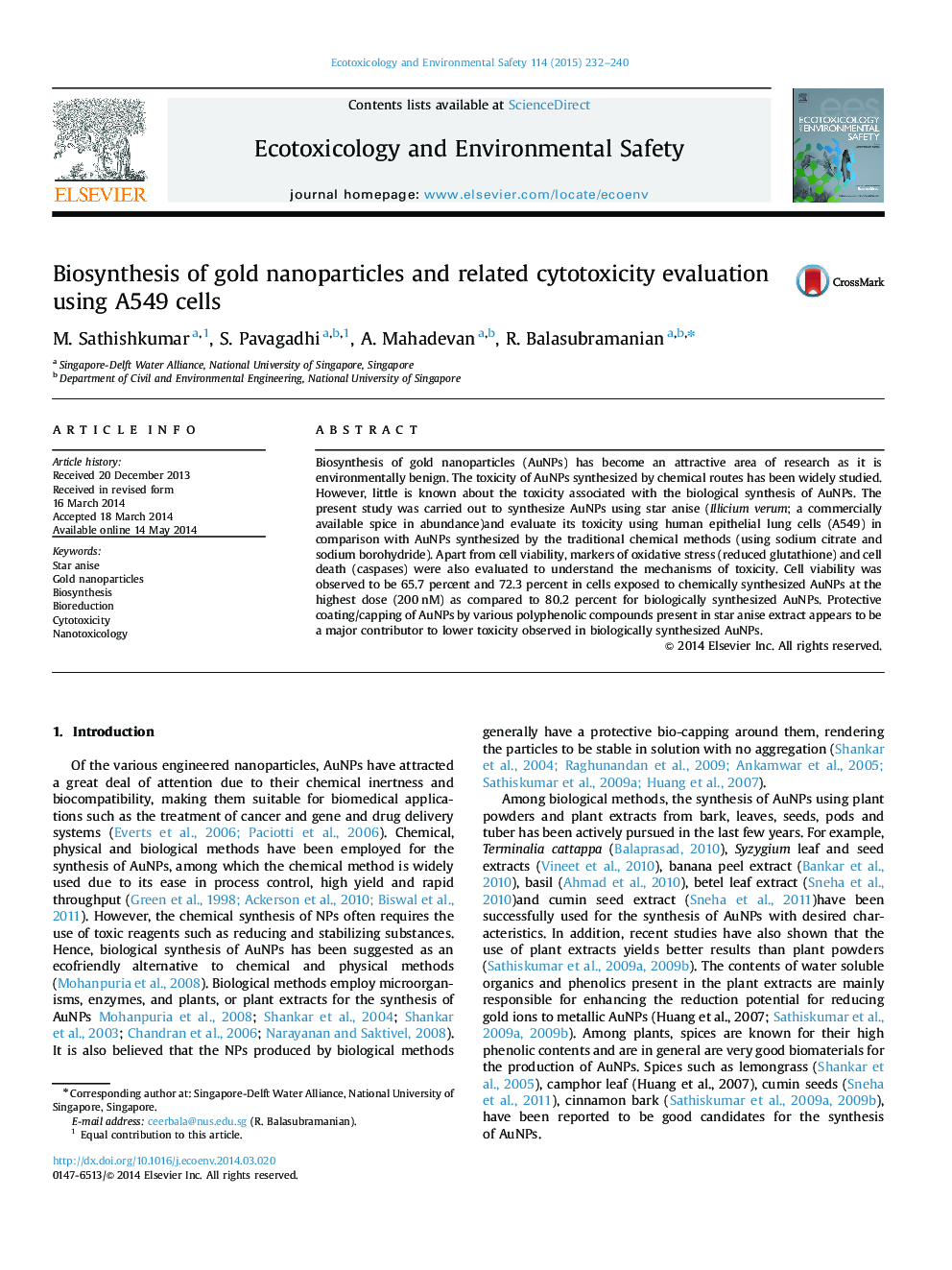| Article ID | Journal | Published Year | Pages | File Type |
|---|---|---|---|---|
| 4419821 | Ecotoxicology and Environmental Safety | 2015 | 9 Pages |
•Comparative evaluation of chemical and biological synthesis of gold nanoparticles.•Biologically synthesized AuNPs are less toxic than those from chemical synthesis.•Lower toxicity seems to be due to protective capping of biologically synthesized AuNPs.
Biosynthesis of gold nanoparticles (AuNPs) has become an attractive area of research as it is environmentally benign. The toxicity of AuNPs synthesized by chemical routes has been widely studied. However, little is known about the toxicity associated with the biological synthesis of AuNPs. The present study was carried out to synthesize AuNPs using star anise (Illicium verum; a commercially available spice in abundance)and evaluate its toxicity using human epithelial lung cells (A549) in comparison with AuNPs synthesized by the traditional chemical methods (using sodium citrate and sodium borohydride). Apart from cell viability, markers of oxidative stress (reduced glutathione) and cell death (caspases) were also evaluated to understand the mechanisms of toxicity. Cell viability was observed to be 65.7 percent and 72.3 percent in cells exposed to chemically synthesized AuNPs at the highest dose (200 nM) as compared to 80.2 percent for biologically synthesized AuNPs. Protective coating/capping of AuNPs by various polyphenolic compounds present in star anise extract appears to be a major contributor to lower toxicity observed in biologically synthesized AuNPs.
Graphical abstractFigure optionsDownload full-size imageDownload as PowerPoint slide
